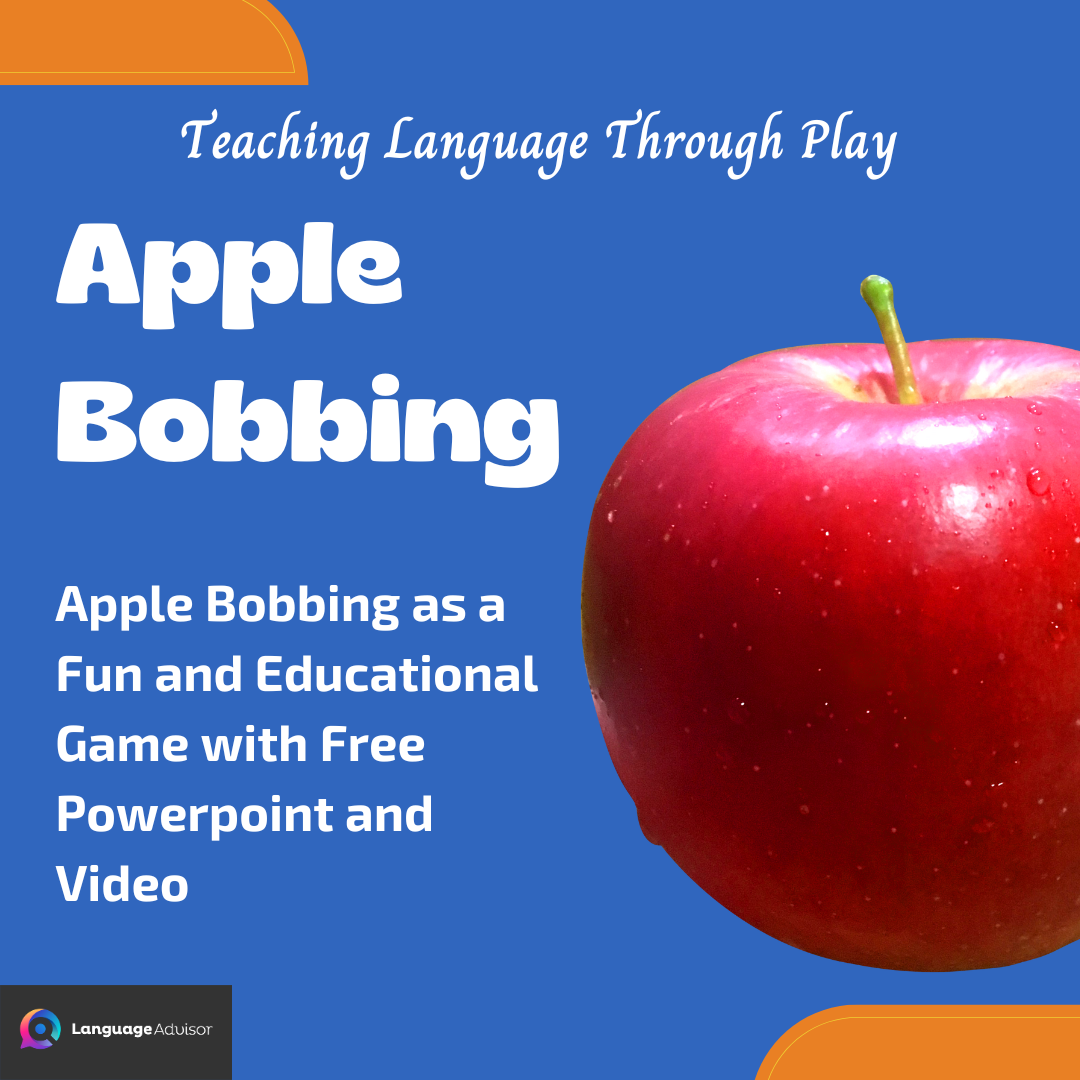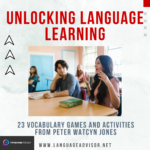Apple Bobbing: Teaching Language Through Play: Apple Bobbing as a Fun and Educational Game with Free Powerpoint and Video
Apple Bobbing: Teaching Language Through Play

Learning a new language can sometimes feel like a daunting task, but when teaching is combined with play, the process becomes more engaging and enjoyable. One creative and exciting way to teach language is through a popular autumn activity—apple bobbing. While traditionally known as a party game, apple bobbing can be turned into an interactive and educational tool in the language classroom.
In this blog post, we’ll explore how to transform the simple act of bobbing for apples into a dynamic language-learning game that strengthens vocabulary, enhances communication skills, and brings fun to the learning environment.
What Is Apple Bobbing?
Apple bobbing is a traditional game where apples float in a tub of water, and participants try to grab them using only their mouths—no hands allowed! Typically played at Halloween parties or fall festivals, it’s a challenge of dexterity and determination.
Now, imagine applying this game to a classroom setting for language teaching. Instead of just a physical activity, the game can become a multi-sensory language experience that incorporates vocabulary practice, sentence formation, and speaking exercises.
Why Use Games Like Apple Bobbing to Teach Language?
Games have long been recognized as a valuable teaching tool, particularly in language learning, for several reasons:
- They reduce anxiety: Learning a new language can feel intimidating, but when it’s turned into a playful experience, learners feel more at ease and open to making mistakes.
- They improve retention: Games engage multiple senses and create strong associations, making it easier for learners to remember words, phrases, and concepts.
- They build motivation: Competition and rewards, even if just for fun, create excitement and a sense of achievement, motivating students to participate and learn.
- They provide context: Playing games allows learners to practice language in meaningful, real-world scenarios, improving their conversational skills.
How to Play Apple Bobbing for Language Learning
To adapt apple bobbing for language learning, you’ll need a few key elements: a tub of water, apples (real or plastic), and some creativity to tie in language objectives. Below are a few variations of the game, depending on the language skills you want to focus on.
1. Vocabulary Challenge Apple Bobbing
This version focuses on building vocabulary through play. Before the game, write vocabulary words or phrases on small waterproof cards and attach them to the apples. You can either stick them directly on the apples or tie them to a string that’s attached to the stem.
How to Play:
- Students take turns bobbing for apples, and after successfully grabbing an apple, they read the word aloud.
- The student must then either use the word in a sentence, give its definition, or identify its opposite, depending on their level.
- If they succeed, they keep the apple (or score a point); if not, they pass the apple to another player who can try to complete the challenge.
Benefits:
- Encourages vocabulary recall in an active, memorable way.
- Helps students practice speaking and forming sentences.
- Can be adapted to different proficiency levels by varying the complexity of the words.
2. Sentence Formation Apple Bobbing
This version focuses on grammar and sentence construction. Instead of individual words, the apples have parts of sentences written on them (e.g., subjects, verbs, objects, adjectives).
How to Play:
- After bobbing for an apple, students must create a full sentence using the part of the sentence they’ve drawn.
- The more complex the sentence, the more points they earn. For example, a simple “The cat runs” might earn one point, while a more complex “The black cat runs quickly through the park” could earn three points.
- You can also create teams and have them collaborate to form grammatically correct sentences.
Benefits:
- Reinforces proper sentence structure and word order.
- Enhances critical thinking as students must quickly piece together logical sentences.
- Promotes teamwork if done in groups, making language learning a collective effort.
3. Conversational Apple Bobbing
This version is perfect for practicing conversational skills and quick thinking in a new language. It works especially well with intermediate and advanced learners.
How to Play:
- Each apple represents a topic or prompt for discussion (e.g., “Describe your favorite holiday,” “What would you do if you won the lottery?”).
- When a student catches an apple, they must respond to the prompt in the target language, speaking for a certain amount of time (e.g., 30 seconds to a minute).
- Other students can ask follow-up questions based on the response, further encouraging interaction and dialogue.
Check out this video
Benefits:
- Builds confidence in speaking and thinking in the target language on the spot.
- Encourages conversational flow and practice of spontaneous communication.
- Allows for more natural language use, as students discuss personal experiences and opinions.
Customizing Apple Bobbing for Different Languages and Levels
One of the greatest aspects of adapting apple bobbing for language teaching is its flexibility. You can easily modify the difficulty and focus of the game based on the students’ proficiency level, age group, or language being taught.
- For beginner learners, use simple words or phrases like greetings, colors, or numbers.
- For more advanced learners, incorporate sentence structures, complex vocabulary, or idiomatic expressions.
- For younger children, consider using pictures on the apples that they must describe or name in the target language, combining visual and linguistic learning.
Wrapping Up: A Game That Makes Learning Fun
Using apple bobbing as a language teaching tool taps into the power of play-based learning, making language acquisition less formal and more interactive. Not only does it engage students physically, but it also creates opportunities for laughter, collaboration, and learning—all essential ingredients for a successful classroom environment.
So, whether you’re teaching English, Spanish, French, or any other language, try adding a twist of apple bobbing to your lesson plan. You may be surprised at how a game can turn a language-learning session into an unforgettable experience!
Have you tried using games in your language classroom? Share your experiences in the comments below!

Apple Bobbing
DOWNLOAD THE POWER POINT FOR FREE






